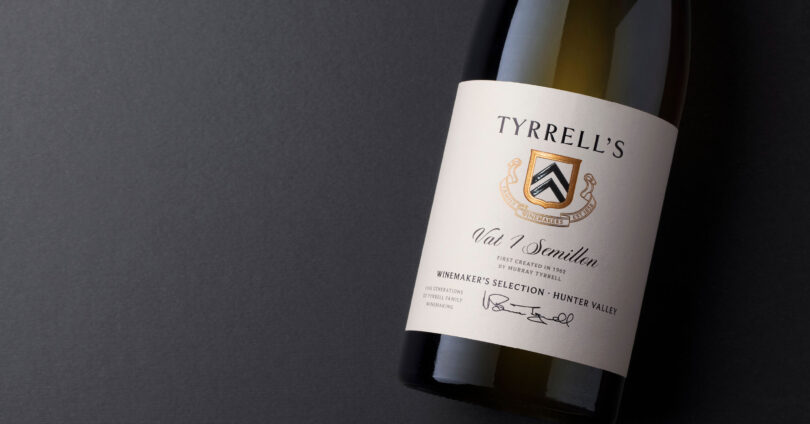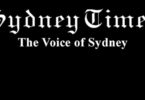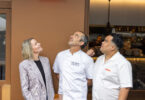January Blues in London
Written by Giles MacDonogh in London

08 February,2025
I suspect my family are quite rare people these days, in that we drink wine with dinner, day-in, day-out, even (possibly especially) in ‘bloody’ January. Those Britons who did not imbibe, and elected to keep the month dry, they were rewarded for their virtue when they woke up on 1 February to discover the latest instalment in the miserable excise saga.
Some of you will recall that four prime ministers ago, Boris Johnson got together with his teetotal chancellor Rishi Sunak to produce a populist measure to reform excise duties that would delight the John Bull-British and enrage Johnny Foreigner. The wheeze was to introduce thirty different tax bands based on alcoholic strength.
Beer, for example, would pay less tax, thereby pandering to Boris’s blokey, Brexity voters. The more alcohol in the wine, the more duty would be payable, this, it was hoped, would make the health lobby purr while filling the coffers of the treasury. Wines under 11.5 ABV would pay less duty – spiffing news! – except there aren’t very many of them these days: the average strength of the bottle of wine is 13.5. An exception was made for sparkling wine too. This was to offer a little sop to the English and Welsh sparkling wine producers, who have been making better wines recently.
It also meant that Boris would pay less for his champagne.
At the beginning of the month therefore, a 13.5 ABV wine went up by another 12%, while a bottle of most Australian reds, say, will increase by 20% or 54p. A few Germans, or traditional Hunter Valley Semillons might see duty decrease by 5%, as their alcoholic strengths are often under 11.5.
At the Australia Day tasting, I spurned the very many 14.5 and 14.5+ wines and headed straight for the Semillons. Despite the huge range of wines available for tasting that day, there must have been fewer than a dozen Semillons and in more than half the cases on show, the alcoholic strength was over 11.5 ABV.
“Still, I am particularly fond of Australian Semillons, especially those from the Hunter, so I tasted what there was. They are an Australian classic, generally un-oaked and low strength, and they keep for years. The locus classicus is Tyrrell. The 2024 is 11.8%. It had a soft attack but revealed a really brilliant acidity. Its big brother is the Winemaker’s Selection Vat 1 2018 (12%): earthy, with plenty of lime and tropical fruit, and seemingly endless.”
Brokenwood was the other classic.
The straight 2022 (11%) was slightly peppery with a racy, apple-and-lime acidity and properly refreshing. This would sell for around £24 on our market. The ‘LR Reserve’ 2017 was all of £60. It was much more concentrated – a really great wine. The Gundog Estate also makes superb Semillons: 2022 was reminiscent of Tyrrel (11%), the ‘Wild’ wine of the same year was more flinty, and more tropical in its fruit. Another proper Hunter Valley Semillon came from Keith Tulloch (10.5 ABV). It was slightly nutty and had great length.
Of course, Semillon comes in all shapes and sizes. Some are blended, like the Whistling Duck Semillon Sauvignon Blanc 2024 (11.5) from Calabria Family Wines, a good commercial wine at a good price. Moss Wood on Margaret River had a 2023 Semillon at 14.5 (beware of the duty)! Kaesler in the Barossa’s 2024 was more typical with its appley fruit, but again it was 13%. It was spicy, smelled of limes and had huge power. Also from the Barossa, Torbreck’s Woodcutter’s 2023 finished a little dry. From De Bortoli at Riverina, there was a scrumptious 2020 ‘Noble One Botrytis’ smelling of grass, hair lacquer, bread and toffee.
I was a bit disappointed by the Grands Crus Classés of Saint Emilion tasting.
It led on the 2021s, probably because the châteaux want to sell them off, and it is true that they will be drinking before the 2019s, possibly even the 2018s. Many have impressively deep colour and pretty noses, but almost without exception, they are light and astringent, Fortunately, each estate came with a second vintage and some of these were really lovely: In 2020, the best wine was Château Croix de Labrie.
The best 2019s were the hugely attractive Châteaux de Pressac, the complex Fontplégade (possibly my favourite wine in the tasting) and the intriguing Laroque.
The best 2016s were Châteaux Badette and Montlabert and the ever-classy Clos de l’Oratoire.
The year kicked off, however, with Burgundy, and the Thorman Hunt tasting at 67 Pall Mall. This was a big preview of the 2023s featuring some estates which were new to me, and there were lots of really good wines. Prices (in Euros) were obviously high but there were exceptions. I should be very happy to drink the generic Chablis from Jean Collet, where the price was given as €9.50, but that price will not include VAT or our extortionate duty. It was not the only Collet I liked either, I loved the 1er cru Les Vaillons.
Also in Chablis, I’d go to Christian Moreau for Vaillons and Vaudésir and Adrien Defaix for Côte de Lechet and Côte de Lechet Reserve.
In the Mâconnais, some very good wines came from Nicolas Maillet in Verzé – they were also excellent value for money. The best, however, were from Eric Forest in Vergisson: Mâcon Vergisson, Saint Véran and some stunning Pouilly-Fuissés – La Roche, Les Crays and 24 Carats.
In the Côte Chalonnaise the star was François Lumpp in Givry. They were all good, but the best for me were the Givry Blanc 1er Cru Crausot and the Rouge 1er Cru Petit Marole.
And so on to the Côte d’Or. In the Côte de Beaune, I was naturally struck by the name of the Chassagne
Montrachet 1er Cru ‘Vide Bourse’ from Joseph Colin (which was not nearly the most expensive), but the wines I liked best came from Vincent Girardin in Meursault, particularly the Puligny 1er Cru Les Combettes and the Volnay 1er Cru les Santenots. Eric Boigelot was not far behind with some classic buttery Meursault 1er Cru Les Caillerets, but also for his Monthélies. More superb Meursaults came from Domaine Ballot-Millot (Les Genevrières) and the same cru from Latour-Giraud – one of my favourites in the tasting. From Comte Armand, there was a gorgeous cherry-scented Pommard 1er Cru Les Epeneaux.
And finally, the Côte de Nuits. From the Domaine mGavignet in Nuits-Saint-George some excellent Nuits, of which the best was unsurprisingly Les Pruliers. Michel Gros’ top wine was the delicious Vosne-Romanée 1er Cru Clos de Réas Monopole. Domaine Felettig in Chambolle had a simple Chambolle-Musigny Vieilles Vignes at €39.20 that was a dream.
Also excellent was his Beaune 1er Cru Les Champs Pimonts. Anne and Hervé Sigaut in Chambolle had some lovely Chambolles and Morey-Saint-Denis. Marc Roy shone for his Gevrey Chambertin Clos Prieur and René Bouvier was notable both for quality and for his moderate prices, his Fixin Crais de Chêne and wonderful simple Gevrey Chambertin. I suppose we must buy what we can while we can still afford it.







